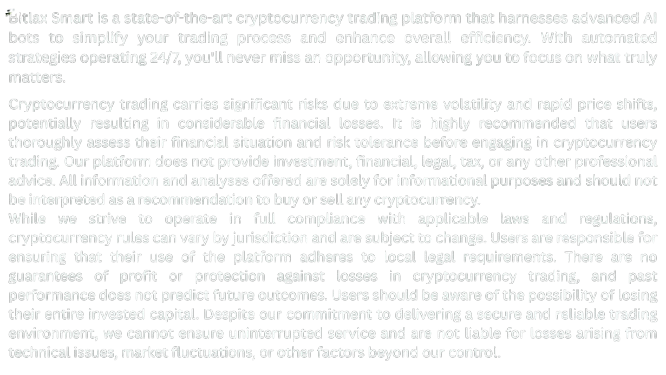Introduction
Overfitting is one of the most common and dangerous traps in algorithmic trading. It happens when a crypto bot is too tightly tuned to historical data—so much so that it performs great in backtesting, but poorly in real life. Think of it as a bot that “memorised the test answers” instead of learning how to trade.
This article is your no-fluff guide to identifying, avoiding, and fixing overfitting in your crypto bots—especially when building or customising them on platforms like Bitlax Smart.
🤖 What Is Overfitting (in Simple Terms)?
Overfitting occurs when your bot’s strategy is too specific to past market data. Instead of spotting general patterns, it’s locked into irrelevant coincidences. It might use too many filters, too much data, or overly complex rules that worked once—but will likely fail moving forward.
“If your bot needs 12 indicators just to break even, it’s probably overfit.”
🔍 Why Overfitting Is a Problem
| Problem | What Happens |
|---|---|
| Unrealistic Backtest | Sky-high profits in simulation, but underwhelming live performance |
| Poor Generalisation | Bot can’t adapt to new market behaviour |
| Increased Risk | May take trades in volatile or unusual market scenarios |
| Confidence Killer | Traders may lose trust in bots altogether |
🧪 How to Spot Overfitting in Your Strategy
1. Too Many Rules or Filters
If your bot has a long string of “if this and that and that and that…” — warning signs.
2. Perfect Backtest, Poor Live Trades
If your backtest shows +300% returns with no losses, but live trading bleeds out slowly, you’ve got an overfit model.
3. Low Trade Count
Did it make only 5 trades in 90 days to look good on paper? That’s cherry-picking, not strategy.
4. Fails Out-of-Sample Tests
Try backtesting your bot on different market data it hasn’t seen before. If performance drops significantly, it’s overfit.
🧰 Tools to Help Detect Overfitting
On Bitlax Smart (or similar platforms), look for these features:
- Out-of-Sample Testing: Split historical data into 70/30 (train/test)
- Walk-Forward Analysis: Move your backtest window forward over time
- Monte Carlo Simulations: Adds randomness to test robustness
- Equity Curve Analysis: Avoid strategies with huge spikes followed by flat lines
✅ Best Practices to Avoid Overfitting
🟡 Use Fewer Indicators
Stick to 1–3 core indicators that are widely used (e.g., RSI, MACD, MA cross).
🟡 Limit Parameters
Don’t optimise dozens of variables. Fewer moving parts = more reliable logic.
🟡 Prefer Simple Logic
Example: “Buy when RSI < 30” is more reliable than “Buy when RSI < 33.7 AND EMA(21) > SMA(13.4) AND Stoch%K > 57.”
🟡 Test Across Market Types
Ensure your strategy performs in bull, bear, and sideways trends.
📈 Real Example: Overfit vs. Realistic Strategy
| Strategy | Trade Count | Backtest Return | Live Return | Verdict |
|---|---|---|---|---|
| OverfitBotX | 12 trades in 90 days | +420% | -6% | ❌ Overfitting |
| CleanBot | 80 trades in 90 days | +38% | +29% | ✅ Realistic |
💬 What to Do if You Suspect Overfitting
- Strip the strategy down to core rules
- Run tests across different timeframes
- Avoid curve fitting (tweaking just to “win” backtests)
- Add randomness to test robustness
- Use live paper trading before real capital
Final Thoughts
Overfitting makes you feel smart—until it costs you money. The more your strategy looks “too perfect,” the more likely it’s fragile.
Remember: trading bots are tools, not magic. They need to be robust, simple, and built for the real world, not just the backtest lab.
“If your bot can’t survive the real market, it doesn’t matter how pretty the chart looks.”
✅ Next Step: Go into your Bitlax Smart dashboard, run your top strategy on out-of-sample data, and see if it still holds up. If not — time to simplify.


